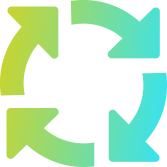Next Generation Sequencing (NGS) Market, By Technology (Targeted Sequencing & Resequencing), By Product, By Application, By Workflow, By End-use and region (North America, Europe, Asia-Pacific, Middle East and Africa and South America).
The global Next Generation Sequencing (NGS) Market size was estimated at USD 12,990 million in 2024 and is projected to reach USD 31,910.4 million in 2031 at a CAGR of 13.7 % during the forecast period 2025-2031.
Next Generation Sequencing (NGS) refers to a set of advanced technologies that allow for rapid and high-throughput sequencing of DNA and RNA, enabling researchers to decode genetic material more efficiently and cost-effectively than traditional methods. NGS encompasses various techniques that facilitate deep sequencing, such as whole genome sequencing, exome sequencing, and transcriptome sequencing, allowing for detailed analyses of genetic variations, mutations, and gene expression profiles. This technology has revolutionized genomic research, clinical diagnostics, and personalized medicine, offering a powerful tool for understanding complex biological processes and diseases.
The scope of the NGS market extends across a wide range of applications, including genomics, oncology, infectious diseases, and reproductive health. In genomics, NGS is crucial for identifying genetic disorders and discovering new biomarkers. In oncology, it is used for cancer diagnostics and developing targeted therapies by detecting specific mutations in tumor cells. NGS is also employed in microbiology for pathogen detection and in the field of agriculture for improving crop traits and livestock breeding. The adoption of NGS in clinical diagnostics and personalized medicine is rapidly growing, with several NGS-based tests already approved for use in medical practice, reflecting the broad potential of this technology.
The NGS market is primarily driven by advances in sequencing technologies that continue to improve accuracy, speed, and affordability. The decreasing cost of sequencing has been a significant factor in the widespread adoption of NGS, enabling both academic researchers and healthcare professionals to leverage it for routine testing and studies. Additionally, the growing prevalence of chronic diseases, particularly cancer, and the increasing demand for precision medicine have led to a surge in NGS applications in clinical settings. Furthermore, the availability of user-friendly platforms, along with improved bioinformatics tools, is enhancing the accessibility and efficiency of NGS, making it easier for professionals to interpret vast amounts of sequencing data.
Key trends influencing the NGS market include the growing integration of NGS with artificial intelligence (AI) and machine learning (ML) for enhanced data analysis, as well as the rise of liquid biopsy, which allows for non-invasive detection of genetic mutations and cancer biomarkers. Another emerging trend is the focus on improving the accuracy and sensitivity of sequencing techniques to detect rare mutations and genetic variants. Additionally, the increasing emphasis on personalized medicine is expected to further propel the demand for NGS, as it allows for more tailored therapeutic approaches based on an individual's genetic makeup. As the technology continues to evolve, NGS is expected to play a pivotal role in advancing precision medicine and transforming healthcare.
Experts in the Next Generation Sequencing (NGS) Market highlight several key trends driving growth and innovation. Next Generation Sequencing (NGS) is a transformative technology that enables rapid, high-throughput sequencing of DNA and RNA, revolutionizing genomics, clinical diagnostics, and personalized medicine. It has broad applications across fields like oncology, infectious diseases, and agriculture, allowing for detailed genetic analysis and mutation detection. The market is driven by advances in sequencing technologies that reduce costs, improve accuracy, and expand accessibility, alongside the increasing demand for precision medicine and targeted therapies. Key trends include the integration of AI for data analysis, the rise of non-invasive liquid biopsy, and a focus on enhancing sequencing accuracy. NGS is expected to continue shaping the future of healthcare by enabling more personalized and effective treatments.
North America to Dominate the Market
|
Report Feature |
Descriptions |
|---|---|
|
Growth Rate |
CAGR of 13.7% during the forecasting period, 2025-2031 |
|
Historical Data |
2022-2023 |
|
Forecast Years |
2025-2031 |
|
Base Year |
2024 |
|
Units Considered |
Revenue in USD million and CAGR from 2025 to 2031 |
|
Report Segmentation |
Technology, Product, Application, Workflow, End-use and region |
|
Report Attribute |
Market Revenue Sizing (Global, Regional and Country Level) Company Share Analysis, Market Dynamics, Company Profiling |
|
Regional Level Scope |
North America, Europe, Asia-Pacific, South America, and Middle East, and Africa |
|
Country Level Scope |
U.S., Japan, Germany, U.K., China, India, Brazil, UAE, and South Africa (50+ Countries Across the Globe) |
|
Companies Profiled |
Illumina, F. Hoffman-La Roche Ltd., QIAGEN, Thermo Fisher Scientific, Inc., Bio-Rad Laboratories, Inc., Oxford Nanopore Technologies, PierianDx, Genomatix GmbH, DNASTAR, Inc., Perkin Elmer, Inc., Eurofins GATC Biotech GmbH, BGI. |
|
Available Customization |
In addition to the market data for the Next Generation Sequencing (NGS) Market, Delvens offers client-centric reports customized according to the company’s specific demand and requirements. |
The Next Generation Sequencing (NGS) Market is segmented into various segments such as Technology, Product, Application, Workflow, End-use and Region.
Based on Technology
Based on Product
Based on Application
Based on Workflow
Based on End-use
Based on Region
The Prominent Players in the Next Generation Sequencing (NGS) Market are

